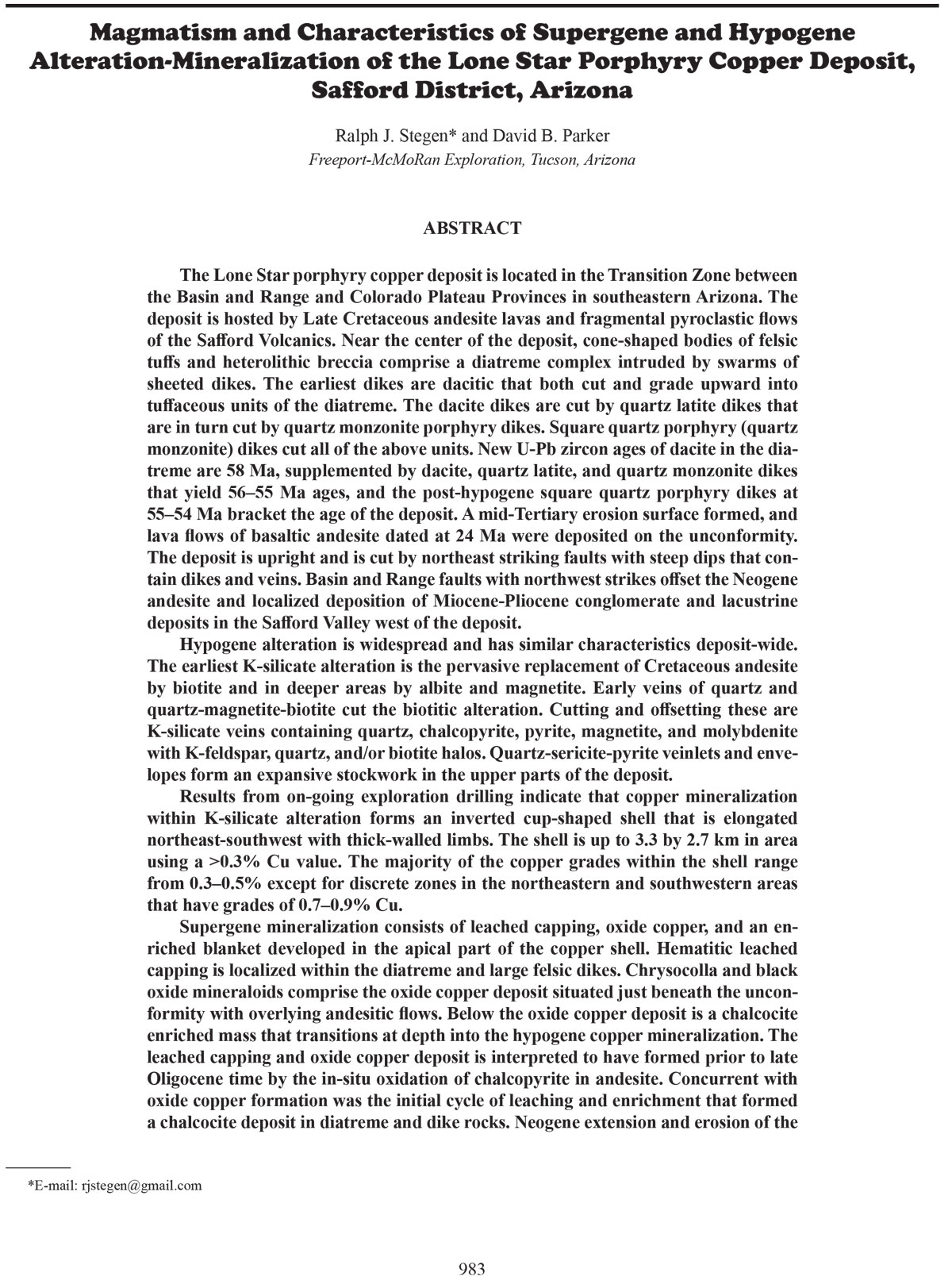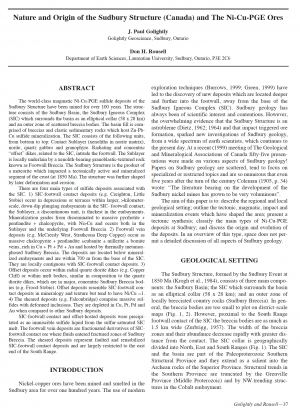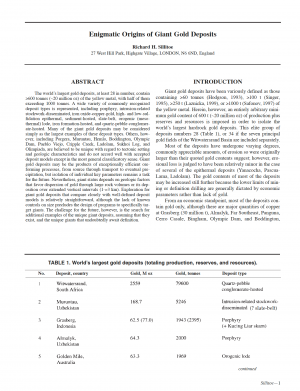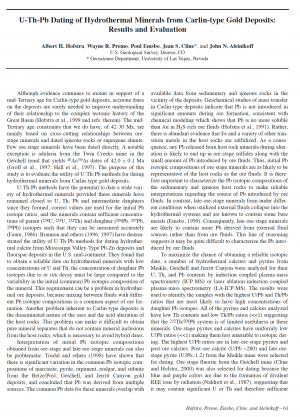Description
The Lone Star porphyry copper deposit is located in the Transition Zone between
the Basin and Range and Colorado Plateau Provinces in southeastern Arizona. The
deposit is hosted by Late Cretaceous andesite lavas and fragmental pyroclastic flows
of the Safford Volcanics. Near the center of the deposit, cone-shaped bodies of felsic
tuffs and heterolithic breccia comprise a diatreme complex intruded by swarms of
sheeted dikes. The earliest dikes are dacitic that both cut and grade upward into
tuffaceous units of the diatreme. The dacite dikes are cut by quartz latite dikes that
are in turn cut by quartz monzonite porphyry dikes. Square quartz porphyry (quartz
monzonite) dikes cut all of the above units. New U-Pb zircon ages of dacite in the diatreme are 58 Ma, supplemented by dacite, quartz latite, and quartz monzonite dikes
that yield 56–55 Ma ages, and the post-hypogene square quartz porphyry dikes at
55–54 Ma bracket the age of the deposit. A mid-Tertiary erosion surface formed, and
lava flows of basaltic andesite dated at 24 Ma were deposited on the unconformity.
The deposit is upright and is cut by northeast striking faults with steep dips that contain dikes and veins. Basin and Range faults with northwest strikes offset the Neogene
andesite and localized deposition of Miocene-Pliocene conglomerate and lacustrine
deposits in the Safford Valley west of the deposit.
Hypogene alteration is widespread and has similar characteristics deposit-wide.
The earliest K-silicate alteration is the pervasive replacement of Cretaceous andesite
by biotite and in deeper areas by albite and magnetite. Early veins of quartz and
quartz-magnetite-biotite cut the biotitic alteration. Cutting and offsetting these are
K-silicate veins containing quartz, chalcopyrite, pyrite, magnetite, and molybdenite
with K-feldspar, quartz, and/or biotite halos. Quartz-sericite-pyrite veinlets and envelopes form an expansive stockwork in the upper parts of the deposit.
Results from on-going exploration drilling indicate that copper mineralization
within K-silicate alteration forms an inverted cup-shaped shell that is elongated
northeast-southwest with thick-walled limbs. The shell is up to 3.3 by 2.7 km in area
using a >0.3% Cu value. The majority of the copper grades within the shell range
from 0.3–0.5% except for discrete zones in the northeastern and southwestern areas
that have grades of 0.7–0.9% Cu.
Supergene mineralization consists of leached capping, oxide copper, and an enriched blanket developed in the apical part of the copper shell. Hematitic leached
capping is localized within the diatreme and large felsic dikes. Chrysocolla and black
oxide mineraloids comprise the oxide copper deposit situated just beneath the unconformity with overlying andesitic flows. Below the oxide copper deposit is a chalcocite
enriched mass that transitions at depth into the hypogene copper mineralization. The
leached capping and oxide copper deposit is interpreted to have formed prior to late
Oligocene time by the in-situ oxidation of chalcopyrite in andesite. Concurrent with
oxide copper formation was the initial cycle of leaching and enrichment that formed
a chalcocite deposit in diatreme and dike rocks. Neogene extension and erosion of the Oligocene basalt cap rocks resulted in the subsequent partial leaching of the chalcocite bodies and formation of chalcocite enrichment at depth.





